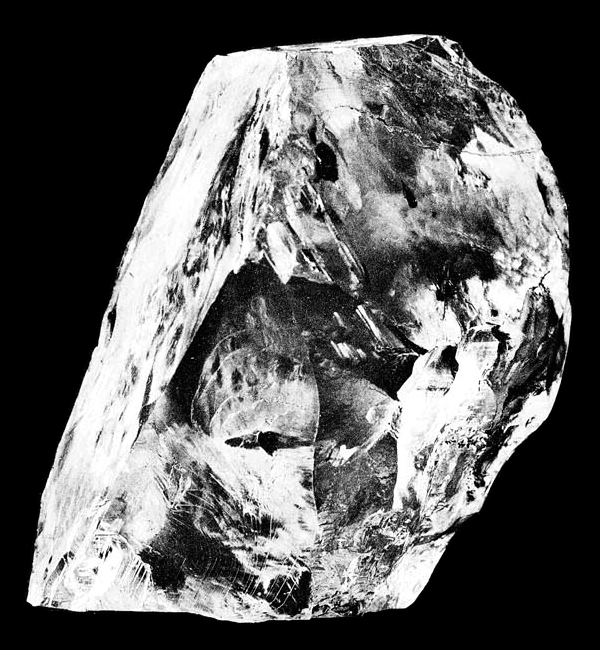

In the year 1860, Erasmus Jacob, a farmer's son, found a pretty glittering pebble on the bank of the Orange River. The pebble was beautiful and strong. This pebble was identified as a piece of the diamond by a geologist. This piece of diamond was named Eureka. This incident was reported from the Cape Province of South Africa. In the year 1869, one shepherd found a glittering stone from a riverside field. This one was also identified as a piece of diamond. The discovery of these diamond pieces made news in Britain and European cities. As a result, there was a diamond rush to diamond prospected areas of South Africa. Diamond pebbles were collected from alluvial pebble deposits. After detailed prospecting, diamond pipe rocks were discovered in South Africa. Diamonds were extracted from these pipes. Kimberly became a vibrant place due to the collection of diamond pieces in and around this place. The discovery of diamond attracted many explorers to South Africa. Africa is home to major diamond fields in the world. Other major diamond fields are found in countries like Russia, Canada, Australia, and Brazil.
The discovery of diamond in Africa made this precious stone affordable for the middle-class people in Europe and America. Countries like South Africa, Botswana, Angola, Namibia, Zimbabwe, Tanzania, Lesotho, Ivory Coast, Sierra Leone and the Democratic Republic of Congo are significant producers of rough diamond in Africa. Export of rough diamond was highest from African mines. The USA is the top destination for gem and jewellery. India is the major country in the polishing and cutting of rough diamond in the world. De Beers is the largest diamond mining company in the world. It operated in mining activities in 28 countries. De Beers was founded in 1888 by a merger of companies founded by Cecil Rhodes and Barney Barnato. It is the most significant marketing agency for the rough diamond in the world.
The mining of diamond was started in Namibia in 1908. Alluvial sediments are found as the source of diamonds. Coastal sediments and sea beds are also used as the source for the extraction of diamonds in Namibia. Orange river diamond mine is a major mining area of Namibia. Alexander Bay Marine mine is the new source of diamond in Namibia. Coastal sediments and sea beds provided new hope for diamond mining in Namibia. Diamond was first found in Angola in the year 1912. Alluvial deposits mainly were used for the extraction of diamonds. Catoca diamond mine is the largest mine of diamond in Angola. Lulo diamond mine is also famous for its colourless and pink diamonds. The Democratic Republic of Congo is a major producer of the rough diamond. Bakwanga, Miba and Forminiere diamond mines are producing mines of DR Congo. Lesotho also has few diamond-producing areas.
Letseng diamond mine is a very important area for diamond production in Lesotho. Tanzania has diamond production from its mine like Williamson diamond mine. Zimbabwe has few diamond mines like Baba diamond fields, Morange diamond fields and Murowa diamond fields. Diamond mining is increasing in some other countries. Smuggling and illegal mining of diamond emerged as a major mining problem in many countries. There is a ban on blood diamonds from many countries in Africa and the world. Diamond mining provided employment to many people in Africa. It provided revenue to many countries and acted as a means of development in those countries in Africa. I hope diamond mining can give a boost to the economy of diamond producing countries in Africa.